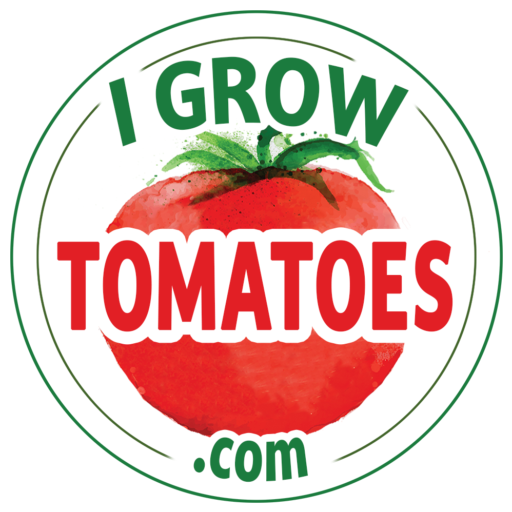When it comes to the best way to support your tomato plants in your vegetable garden, it may surprise you that those readily available, cylindrical tomato cages might not be the best choice. Although they might be the most popular tomato supports found in stores – using them in your garden unfortunately usually leads to frustration and disappointment.
So much time and effort goes into growing tomatoes for home gardeners. Many spend countless hours planting and growing their own plants from seed. At the same time, they spend a lot of time and energy preparing the soil where their tomatoes will go.
But all too often, the last thing many gardeners think about is supporting their tomatoes once they are in the ground. Even though that support system is vital for just how well their tomatoes perform – and how easy it is to harvest them as well.
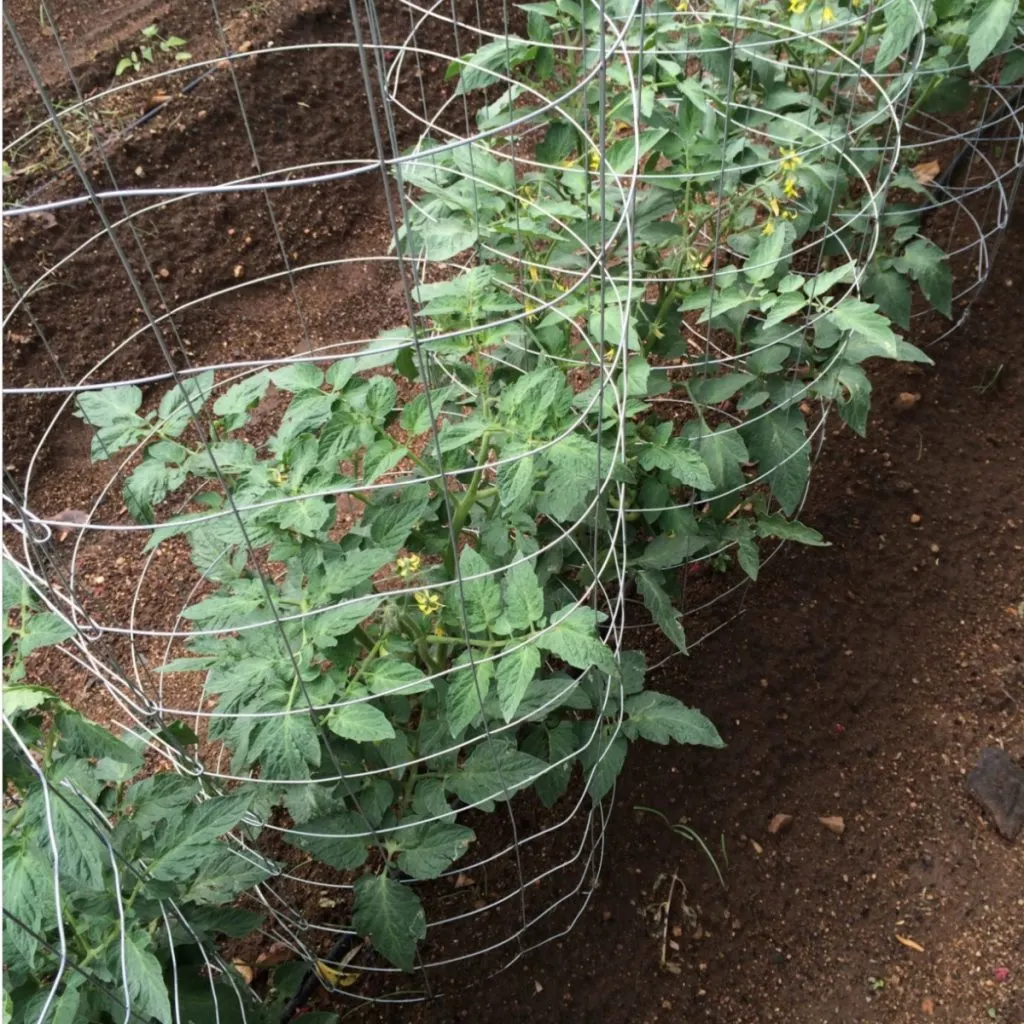
Perhaps that is why the all too common round tomato cages are so popular. They are easy to find, have been in use for decades, and are usually the choice when gardeners need a quick way to support their growing tomatoes. But that doesn’t mean they are the best choice!
Disadvantages Of Using Tomato Cages
So why are tomato cages not always a good choice for supporting tomatoes? To be fair, they can still be a practical option in certain situations. For instance, if you have a single determinate tomato variety that remains small and compact during the growing season, a tomato cage can be a viable option. (See our related article on Determinate vs. Indeterminate Tomato Plants).
But beyond that, and for most tomato varieties, they have quite a few drawbacks. For starters, they can be relatively expensive to purchase. And if you have a large garden or need a substantial number of cages – it can cost a small fortune!
One thing is for sure, the cost can add up quickly. At $10 on the low end to $20 or more for sturdier types, it can be a budget breaker. Especially when some rarely make it for a season or more without needing replaced.
A Lack Of Support
In addition to the issue of cost, cages also have a hard time supporting large heirloom tomatoes. Tomato cages offer support primarily for the vertical growth of small tomato plants. Many commercially available cages consist of flimsy materials such as thin wire or plastic.
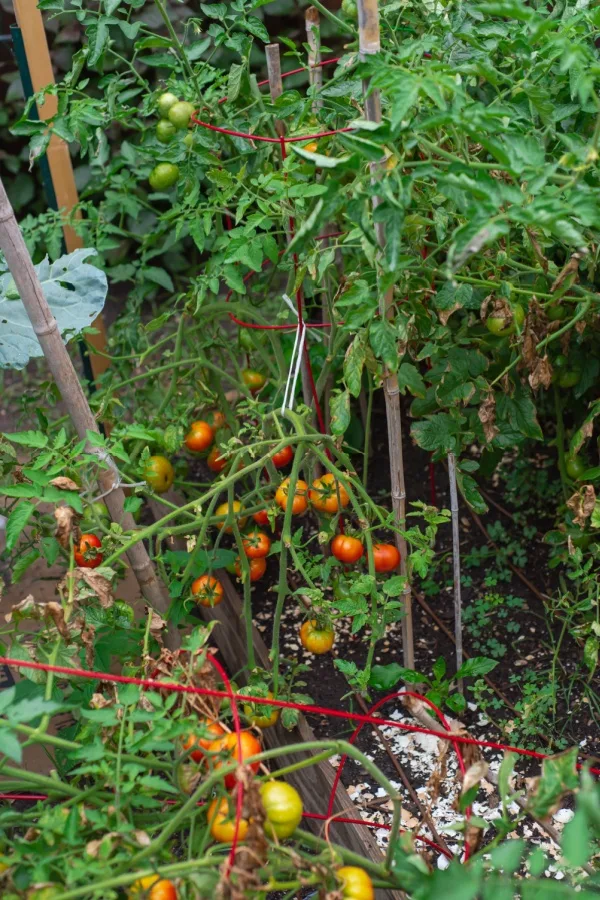
These cages have trouble withstanding the weight of mature tomato plants or adverse summer weather conditions. Some varieties of tomatoes can grow to heights that exceed 6 feet. Because of that, even the strongest of commercial cages will struggle to support the tall, heavy branches.
Quite often, with cages, the plant grows so large they begin to lift the cage out of the ground. Even more so once they are filled with ripening tomatoes. It often leads to cages bending, breaking, or collapsing. And the tomato harvest being damaged or even ruined.
Last but not least, cages can get in the way quite easily. It can make pruning your plants almost impossible. Even worse, harvesting through the metal openings can be even tough – often ruining the fruit in the process of picking it and pulling it out.
A Few Great Alternatives To Tomato Cages
So if tomato cages aren’t the answer – what is? As it turns out, there happens to be a few great DIY solutions that fit the bill. Not only are they far less when it comes to cost – they also hold up for years. Best of all, they support the largest of tomato plants with ease!
Here is a look at some of the best alternatives to cages:
Livestock Fencing & Metal Posts
For those who plan to have a garden for many years to come, this is one of the best tomato support systems around. To make, you simply drive metal fence posts into the ground. Then, you use a portion of a livestock panel (goat / cow panel) and zip tie it to the sturdy post.
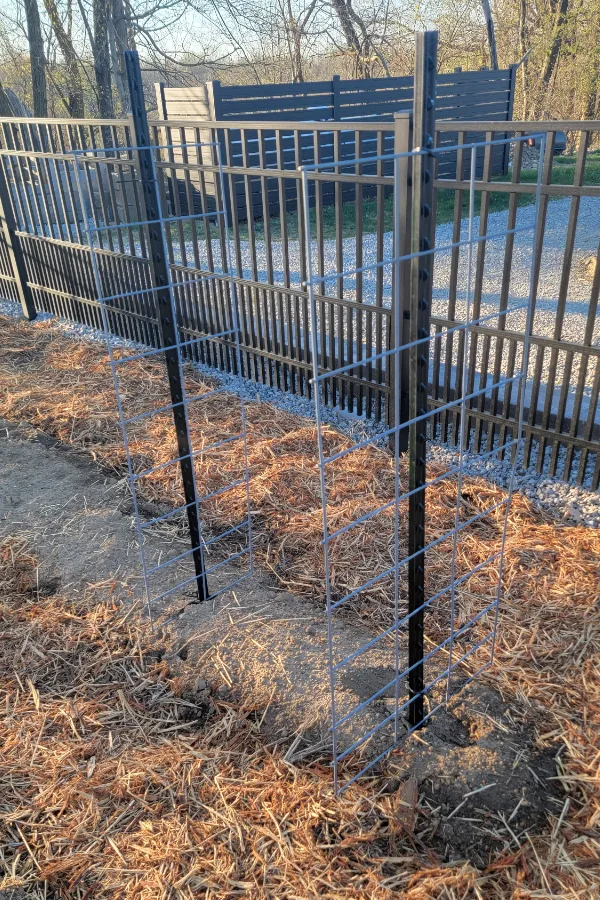
You can cut the livestock panel to whatever size you prefer. For large indeterminates, create 5′ tall panels 18 inches wide. For smaller varieties, you can simply cut panels 12 inches wide and 3′ tall. This system allows you to easily tie up tomato branches without having to work inside the confines of a small metal circle. In addition, it makes picking ripe fruit a breeze!
They are designed to handle both indeterminate and determinate tomato varieties and with their 4 gauge metal construction they will last easily for 10 years or more. Best of all, at the end of garden season they are easy to store. Simply remove the zip ties and stack the panels until next year.
Another benefit of using the livestock panels is that the heavy duty, sturdy construction provides maximum support for the weight of mature tomato plants and their fruit, reducing the risk of bending or breakage under the strain.
Not to mention that the vertical growth makes it easier to access and harvest ripe tomatoes, as they are more visible and easily within reach.
For step by step instructions on how to construct these panels, check out this article: How To Create An Amazing Low Cost Stake-A-Cage.
Trellis Systems
Unlike tomato cages, which provide limited support, trellises encourage the tomato plants to grow higher and taller. However, they also have horizontal supports for the branches and fruit which support very good as well.
There are various designs for tomato trellises, but the basic idea is to create a framework that allows the tomato plants to climb upward as they grow. Common materials for building trellises include wood, metal, bamboo, or even heavy-duty plastic mesh.
Some common types of tomato trellises include:
- A-Frame Trellis: This type of trellis consists of two angled sides joined together at the top, resembling the letter “A.” Tomato plants grow up the sides of the structure. And the horizontal crossbars provide support for the branches and fruit.
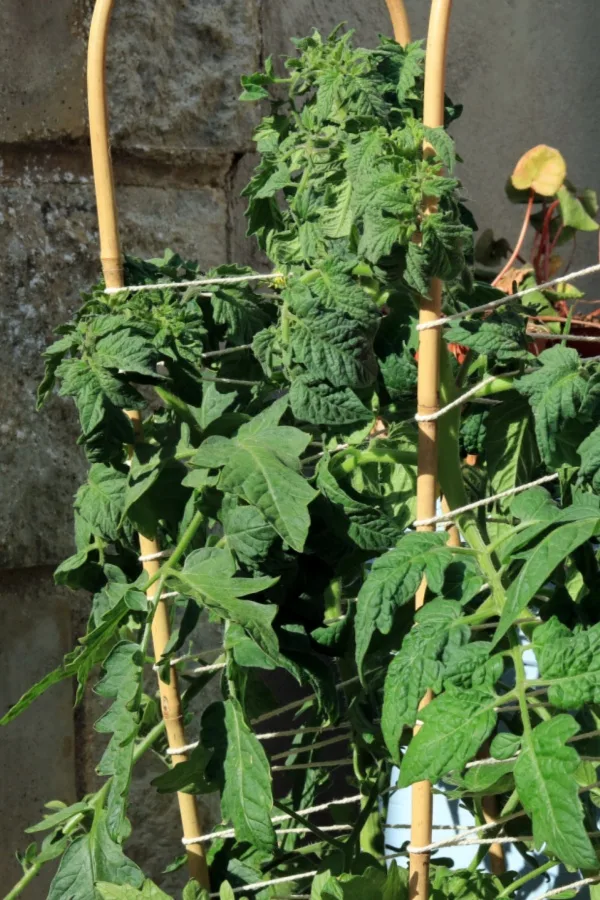
- String Trellis: Place vertical stakes or posts at regular intervals along the row of tomato plants. Strings are then tied horizontally between the stakes at various heights, creating a grid-like pattern. As the tomato plants grow, their branches are gently tied to the strings for support.
- Cattle Panel Trellis: Cattle panels are sturdy wire mesh panels. You install them vertically and secure them between posts to create a trellis wall. Tomato plants will grow up the panels, and the wide spacing between the wires allows easy access for harvesting.
- Trellis Netting: Trellis netting is a lightweight, flexible mesh material. It stretches between stakes or posts to create a trellis. As the tomato plants grow up the openings in the mesh, the material provides strong support for the branches and fruit. (Affiliate Link: Tomato Trellis Netting).
Why Not To Use A Tomato Cage
Both the livestock panels and the various trellis systems used to support and tie up tomato plants have great advantages to keeping your tomato plants growing, staying healthy and producing.
Both systems allow for better air circulation around the tomato plants, which can help reduce the risk of disease such as blight. Improved air circulation also promotes healthier plant growth and can lead to better fruit production.
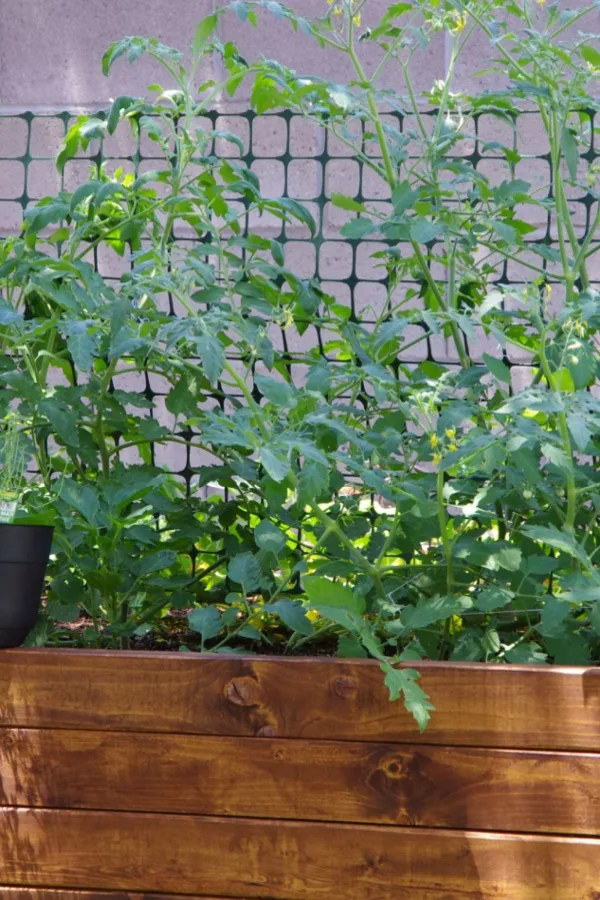
In addition to allowing more sunlight to reach the plant, it also makes it easier to access the plants for tasks such as pruning, weeding, and harvesting. This can save time, effort and frustration when compared to dealing with trying to maneuver your hands in and out of circular tomato cages.
Here is to supporting your tomato plants for a better, healthier and more productive harvest!
I Grow Tomatoes
Follow Our Facebook Page For Even More Great Tomato Growing Tips! I Grow Tomatoes Facebook Page
I Grow Tomatoes is a website created for those who love all things about tomatoes – from planting and growing – to cooking and canning! We publish two articles every week, 52 weeks a year. Sign up today to follow via email! This article may contain affiliate links.
